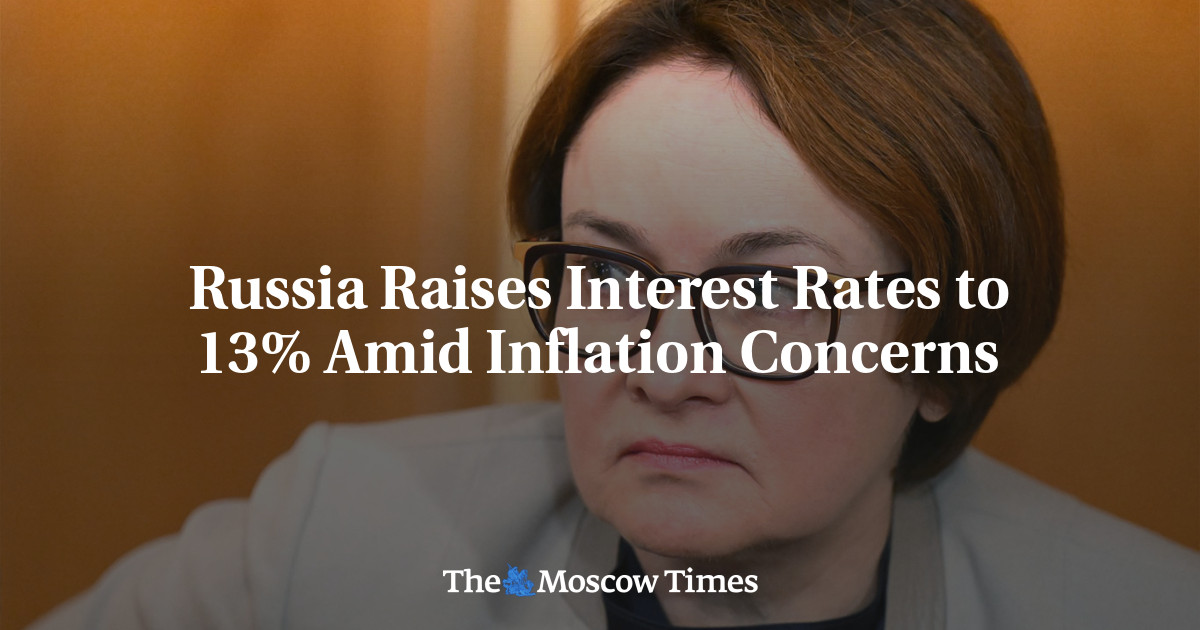
Russia’s Central Bank raised interest rates from 12% to 13% on Friday as it said it remains concerned about an inflationary spiral taking hold across the Russian economy.
The move is the second rate hike in two months following an emergency meeting in August held after the Russian ruble fell below 100 against the U.S. dollar.
The ruble has since dipped just below the crucial level — seen as a barometer of economic health by many Russians — but has failed to strengthen significantly.
A falling currency pushes up the price of goods that use imported parts. Meanwhile, record labor shortages are driving wages higher, which also adds to price concerns.
At a press conference following the decision, Governor Elvira Nabiullina said the latest rate hike was a “response to the materialization of inflationary risks, including due to the impact of the exchange rate.”
The Bank also said that domestic demand was rising much faster than Russia’s economic capacity to produce new goods, which was causing stubborn inflationary pressure across the economy.
Inflation is currently running at 5.5%, the Bank said, and has risen fast in recent months. The Bank officially targets an inflation rate of 4%.
It said Friday that the falling ruble had contributed to prices rising by 9.9% on a seasonally adjusted basis, which accounts for the fact that some prices, such as for fruit and vegetables, would typically fall during summer months.
“Considering the current conditions, we need to maintain tight monetary policy for a longer period to bring inflation back to the target,” Nabiullina said.
She added that the Bank would consider possible rate rises later this year if inflation does not cool.
Analysts had predicted some kind of rate rise following the dramatic hike in August and market reaction to Friday’s move was muted.
“Following the sharp increase in the rate by 350 basis points in August, there has been no significant change in the ruble’s exchange rate. It managed to slow down the decline, but the Russian currency is still balanced at about 100 rubles per dollar,” analysts at Russian brokerage Tinkoff Investments said after the decision.
“Also, inflation has continued to accelerate, as has the level of lending,” they added.
Economists generally agree that Russia’s economy is overheating, partly as a result of a rapid increase in government spending to fund its invasion of Ukraine.
The economy has been heavily militarized since February 2022, with investment and workers redirected to boost the production of tanks, missiles, guns and ammo.
Russia’s Central Bank also trimmed its forecast for economic growth next year — it now expects GDP to expand by 0.5-1.5%, compared to 0.5-2.5% in July.
Higher interest rates are designed to cool economic activity, by increasing the costs of borrowing and encouraging saving.
However, because so much of Russia’s economy is being driven by government spending on the war, some independent analysts say rate rises may not have as strong an impact.
“A month after the previous increase, we still see an acceleration in inflation and a weak ruble,” said BCS Investments analyst Mikhail Zeltser, who added he expects the rate of 13% to be held for the foreseeable future.
“The Central Bank has shown its decisiveness, and it should work,” he said.
Earlier on Friday, speaking at a meeting with his Belarusian counterpart in Sochi, President Vladimir Putin said Russia’s economy was “stable and reliable.”